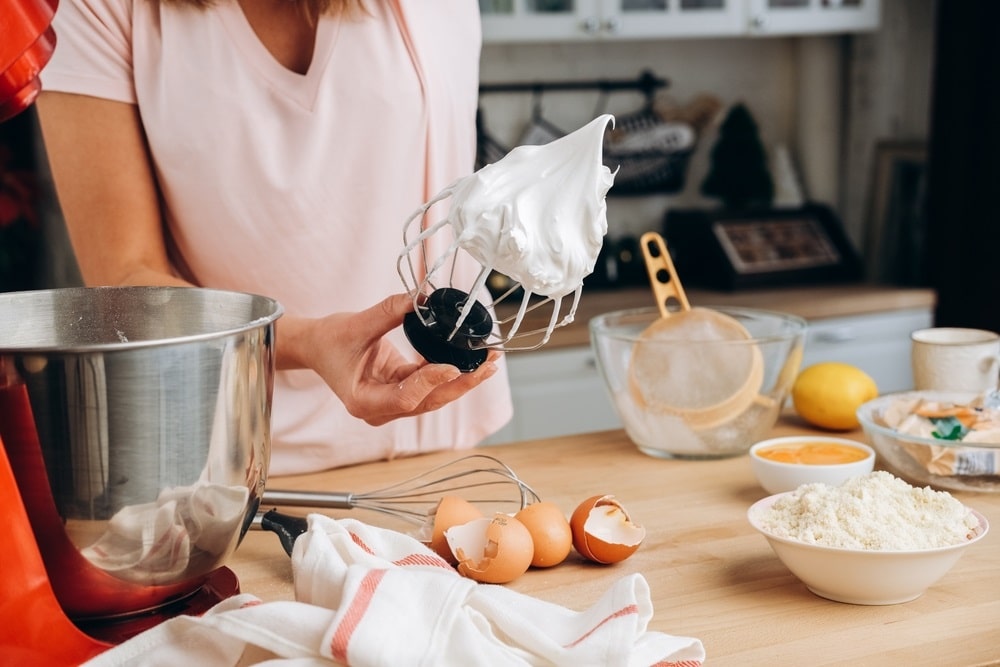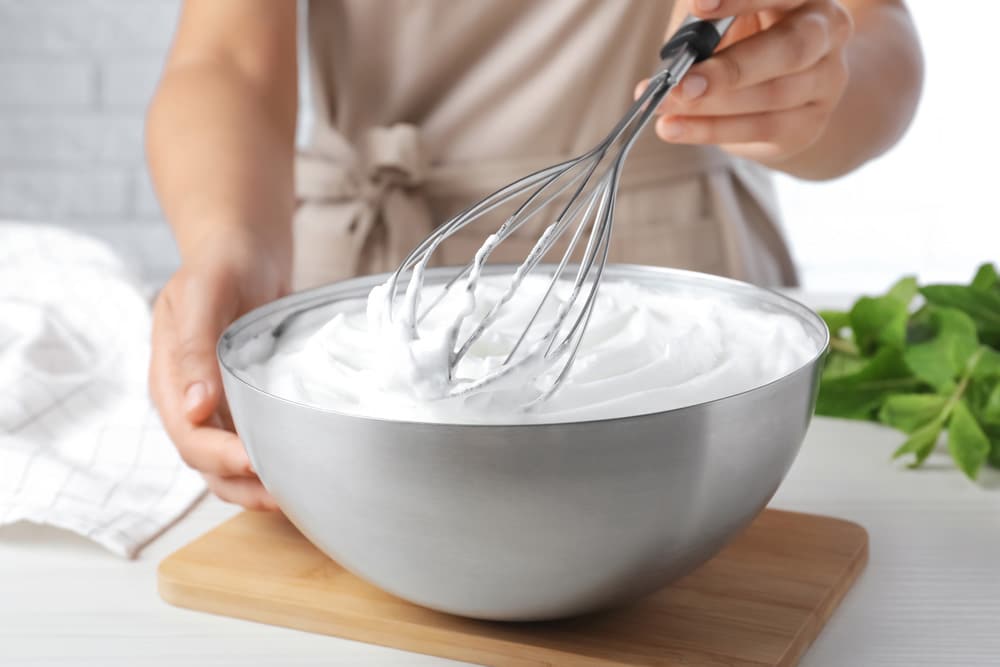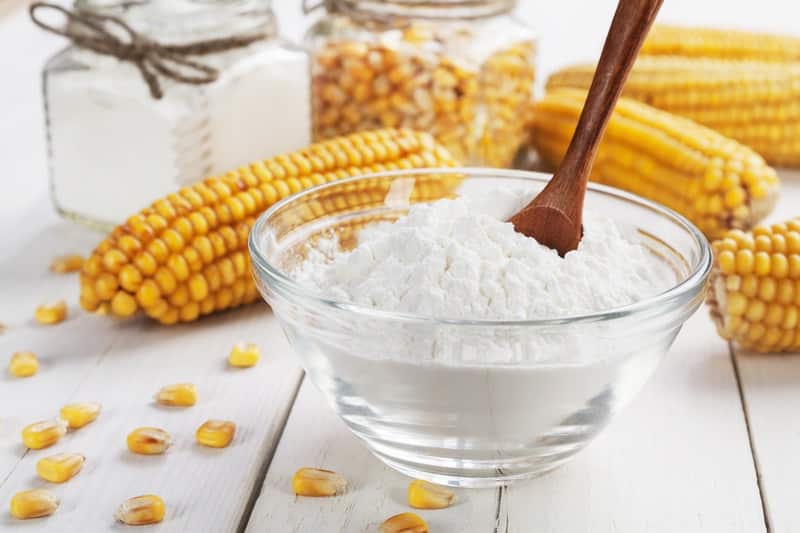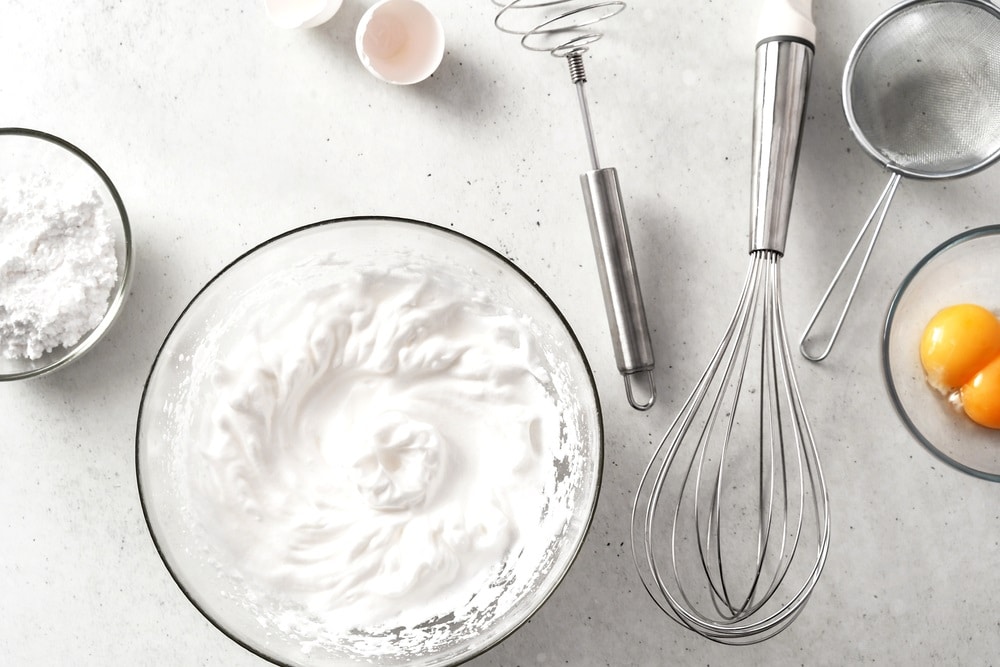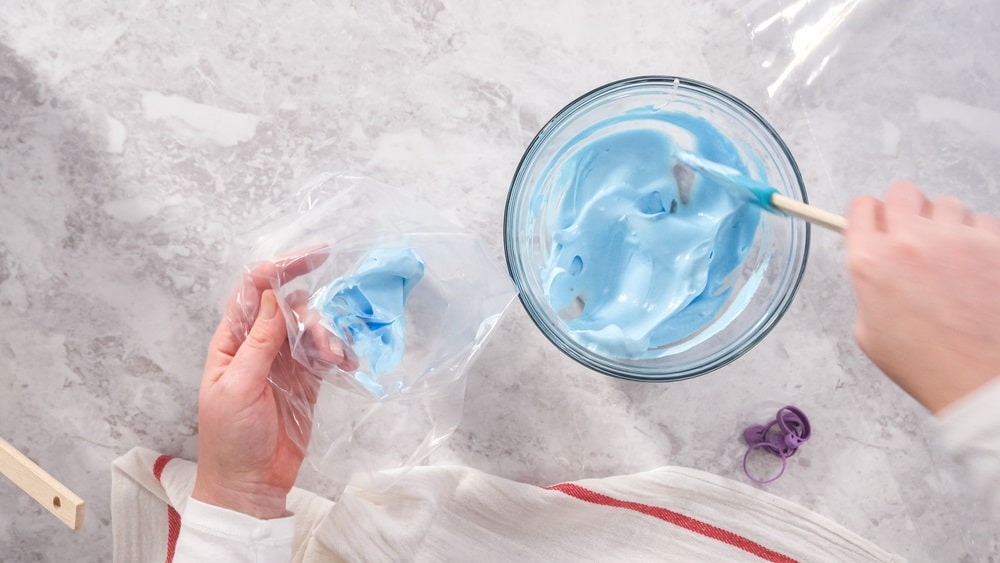
Who can resist sweet, crispy, melt-in-the-mouth meringue? It’s hard to believe that the sweet, billowy white clouds we love so much are made from just a few ingredients – mainly egg white and sugar.
While the ingredients are simple, perfect meringue is a little tricky to master at home.
One of the main things that home cooks struggle with when making meringue is that it turns out too runny. We have eight useful tips for you to prevent this problem from happening or to fix it if it happens in your kitchen.
Read on if you want to be a meringue masterchef!
What is meringue used for?
Before we look at how to fix or prevent runny meringue, let’s look at what it is used for.
- Pie toppings such as for lemon meringue pie or Key Lime pie
- To create light and crispy cookies
- To make a Swiss, Italian, or French meringue buttercream icing for cakes
- To create firm baskets for fillings such as when making pavlova dessert
- As an element in desserts such as Eton mess or baked Alaska
- To create plain, individual, dried meringues to serve with anything from fruit to curd to ice cream
- Meringue forms the base of marshmallows
- It is sometimes used in frozen desserts like ice cream
As you can see, meringue is used in a wide variety of sweet treats so it is an essential thing for any cook to master.
What ingredients do you need to make meringue?
Of course, you will need to check the specific recipe you are using but your usual ingredients will be egg whites, castor sugar, vinegar or lemon juice, cream of tartar, salt, and vanilla extract or essence.
What equipment will you need to create meringue?
A high-powered mixer will make your job much easier. Failing this, a hand-held blender will work too. Use the balloon whisk attachments.
A large bowl is needed as the egg whites increase greatly in volume as they are beaten.
How To Prevent Or Fix Runny Meringue
Let’s get into the main question today – how to prevent and fix runny meringue. First of all, take a deep breath because runny meringue isn’t always a disaster. Now, let’s see what can be done about it!
1. Proper whipping
The primary concept of making meringue is incorporating large volumes of air into egg whites by whipping them and then stabilizing the results with sugar and other ingredients like cornstarch or vinegar to hold the texture.
That’s why the first thing you need to do if your meringue is runny is to beat it some more.
Proper whipping is important because it helps attain a huge volume while mixing the egg whites and sugar. In addition, whipping ensures that the sugar dissolves properly.
It is not too much to beat the egg whites and sugar for up to fifteen minutes. Also, ensure that you whip the meringue at the highest possible speed.
Adding a pinch of salt while whipping helps to tighten the eggs’ texture and produce a stiffer result. Also, try adding one-eighth of a teaspoon of cream of tartar for every egg white.
This also works as a stabilizer. Failing that, a teaspoonful of vinegar or lemon juice will help.
2. Use suitable whipping equipment
Unless you have super strong arms, you are going to find it almost impossible to create fluffy, stiff meringue with a fork or hand whisk.
This is definitely the time to dust off your food processor with the whisk attachment, stand mixer, or hand-held electric beater . Let modern technology do the hard work for you!
3. Don’t leave the meringue to stand before baking
Runny meringue can result from leaving the meringue you have created to stand too long before baking it. If you leave it, the air will gradually escape and the mixture will become runny.
Fix the problem by re-whipping it and then baking it straight away. For best results in the future, though, get the meringue into the oven as soon as it has reached the right consistency.
4. Use cornstarch
The problem of runny meringue can be prevented or fixed by beating in a little cornstarch before baking. The starch stabilizes the mixture and prevents the air from escaping.
For an average-sized batch of meringue (using about 3 egg whites), no more than a teaspoonful or two of cornstarch is necessary. Don’t overdo it or you will spoil the meringue’s texture.
Cornstarch is a particularly good option for people living in humid climates.
5. Add more egg whites
You may be able to save your batch of runny meringue by folding in another whipped egg white. Separate another egg and whip it in a separate smaller bowl until you have achieved soft peaks.
Now, fold this into your runny meringue mixture to improve the consistency.
6. Use eggs and sugar at the correct temperature
In the majority of cases, people take eggs out of the refrigerator, separate them, and start whipping them at once. This is one of the biggest reasons behind runny meringue.
Ensure that you bring your eggs to room temperature because it helps achieve lofty peaks as compared to cold eggs.
If you are in a hurry and don’t have time to leave the eggs out for a few hours, speed up the process by putting them into a bowl of warm (not hot) water.
If you have already separated the eggs, stand the bowl containing them in another bigger bowl of hot water. Warm the sugar for a few minutes in the oven before beating it into the whites.
7. Allow no fat near the meringue
Fat in any form is meringue’s worst enemy and will prevent it from whipping as it should.
For a start, make sure your bowl and whisk are scrupulously clean. Wash them in the dishwasher or with soapy hot water if you are unsure.
There is also fat in the yolk of an egg which is why you need to be extremely careful when separating the eggs. Even a small speck of egg yolk can stop the meringue from whipping to billowy, soft peaks.
8. Adding the sugar too soon
Don’t be in too much of a hurry to add the sugar to the whites. Whip the egg whites first until they begin to hold their shape, then add the sugar one spoon at a time, giving it time to be incorporated and dissolve before adding more.
9. Putting it on top of a cold filling
When using meringue on top of a pie such as lemon meringue, it is common to get a liquid, runny layer of meringue on the filling’s surface. This is because the egg white is undercooked there.
Make sure that your pie filling is warm or hot before putting the meringue on top of it. This will allow the egg white to commence cooking immediately and not lose its air.
The Bottom Line
Preventing and fixing runny meringue is pretty simple because you don’t need any special ingredients or equipment to fix the texture. For instance, all you need is some starch or an extra egg to ensure better outcomes.
All in all, all these solutions are affordable as well. We hope these tips help you to save your meringue mixture so that you can make a luscious sweet treat for yourself, your family, and your friends.
